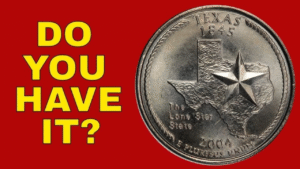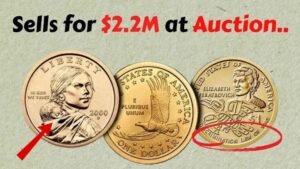Lincoln Wheat Penny Be Worth $4 Billion: Imagine finding a penny in your wallet worth $4 billion! The Lincoln Wheat Penny, minted from 1909 to 1958, is a common coin, but rare versions, like the 1943 copper penny, are rumored to fetch astronomical prices. While the $4 billion claim is likely exaggerated, some pennies have sold for millions. This article explains in simple words why certain pennies are so valuable, how to spot them, and where to look. Start checking your change—you might have a treasure!
What Is the Lincoln Wheat Penny?
The Lincoln Wheat Penny was first made in 1909 to celebrate Abraham Lincoln’s 100th birthday. Designed by Victor David Brenner, it shows Lincoln’s face on the front and two wheat stalks on the back, giving it the “Wheat Penny” name. Over 26 billion were minted until 1958, when the Lincoln Memorial design replaced it. Most are worth just a cent, but rare ones with errors or low mintages can be worth thousands or millions.
Why Are Some Pennies So Valuable?
Certain Lincoln Wheat Pennies are prized for:
- Minting Errors: Mistakes like using copper instead of steel in 1943.
- Low Mintage: Fewer coins made in years like 1909 or 1914.
- Condition: Shiny, unworn coins are worth more.
- Historical Value: Coins tied to events like World War II are sought after.
The $4 billion rumor likely comes from hype about the ultra-rare 1943 copper penny, but no penny has sold for that much. A 1943-D copper penny fetched $1.7 million in 2010, with top estimates around $10–$20 million for a perfect one.
The $4 Billion Penny: Real or Rumor?
The idea of a $4 billion Lincoln Wheat Penny, often linked to the 1943 copper penny, is likely a myth fueled by social media and sensational headlines. During World War II, pennies were made of steel to save copper for the war, but a few copper pennies were accidentally struck. Only about 20 are known, with the 1943-D being the rarest. While one sold for $1.7 million, $4 billion is unverified and unrealistic. Still, the possibility keeps collectors searching!
Top Rare Lincoln Wheat Pennies to Find
Here are the most valuable pennies collectors want:
1. 1943 Copper Penny
- Why Rare: Struck in copper by mistake, not steel.
- How to Spot: Copper color, weighs 3.11 grams, doesn’t stick to a magnet.
- Value: $200,000–$1.7 million.
2. 1909-S VDB Penny
- Why Rare: Only 484,000 made with designer’s initials “VDB.”
- How to Spot: “1909” date, “S” mint mark, “VDB” on back.
- Value: $700–$100,000.
3. 1914-D Penny
- Why Rare: Low mintage of 1.2 million, heavily circulated.
- How to Spot: “1914” date, “D” mint mark, sharp details.
- Value: $500–$120,000.
4. 1955 Doubled Die Obverse
- Why Rare: Blurry text from a minting error.
- How to Spot: Doubled “LIBERTY” or “1955” with a magnifying glass.
- Value: $1,000–$15,000.
| Penny Type | Key Feature | Mint Mark | Estimated Value |
|---|---|---|---|
| 1943 Copper | Copper, not steel | None, D, S | $200,000–$1.7M |
| 1909-S VDB | Designer’s initials, low mintage | S | $700–$100,000 |
| 1914-D | Low mintage, sharp details | D | $500–$120,000 |
| 1955 Doubled Die | Blurry text | None | $1,000–$15,000 |
How to Spot a Valuable Lincoln Wheat Penny
To find a rare penny:
- Check the Date: Look for 1943, 1909, 1914, or 1955.
- Find Mint Marks: Check for “S” (San Francisco), “D” (Denver), or none (Philadelphia) below the date.
- Test Material: For 1943 pennies, use a magnet—steel sticks, copper doesn’t. Copper weighs 3.11 grams, steel 2.7 grams.
- Look for Errors: Use a magnifying glass for doubled text or unusual color.
- Check Condition: Unworn, shiny coins (graded MS-65 or higher) are worth more.
Where to Find These Pennies
You might find them in:
- Pocket Change: Some Wheat Pennies still circulate, though rare.
- Coin Rolls: Get penny rolls from banks to search.
- Old Collections: Check family coin jars, piggy banks, or inherited stashes.
- Coin Shops or Auctions: Visit dealers or check eBay, Heritage Auctions, or GreatCollections.
What to Do If You Find One
- Don’t Clean It: Cleaning can scratch or dull the coin, lowering its value.
- Store Safely: Use a plastic coin holder to protect it.
- Get It Graded: Take it to PCGS or NGC for authentication and grading.
- Sell Smart: Use auction houses (Heritage Auctions), dealers (APMEX), or eBay with clear photos.
Avoiding Fakes
Fakes are common, especially for 1943 copper pennies. Some alter 1944 pennies to look like 1943. Check:
- Material: Use a magnet and weigh the coin (3.11 grams for copper).
- Details: Look for tampered dates or mint marks.
- Professional Grading: Only trust PCGS or NGC to confirm authenticity.
Conclusion
The $4 billion Lincoln Wheat Penny is likely a myth, but rare ones like the 1943 copper penny ($1.7 million) or 1909-S VDB ($100,000) could be hiding in your change, coin rolls, or old jars. Check for key dates, mint marks, errors, and condition, and get finds graded by experts. Watch out for fakes and handle coins carefully. The excitement of finding a valuable penny makes every search thrilling. Start looking through your coins today—you might uncover a fortune!
FAQ
Is a Lincoln Wheat Penny really worth $4 billion?
No, that’s likely exaggerated. A 1943 copper penny sold for $1.7 million, with estimates up to $20 million for a perfect one.
Which Lincoln Wheat Pennies are the most valuable?
The 1943 copper, 1909-S VDB, 1914-D, and 1955 doubled die pennies are top finds, worth hundreds to millions.
Are these pennies still in circulation?
Yes, some may appear in pocket change, bank rolls, or old collections, but rare ones are hard to find.
How do I spot a valuable Lincoln Wheat Penny?
Check dates (1943, 1909, 1914, 1955), mint marks, and errors. For 1943, test with a magnet—copper doesn’t stick.
What should I do if I find a rare penny?
Don’t clean it, store it in a coin holder, get it graded by PCGS or NGC, and sell via auctions or dealers.



